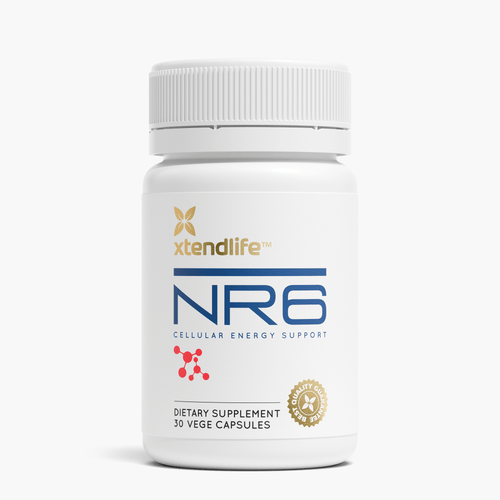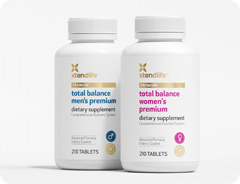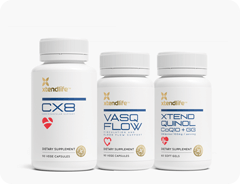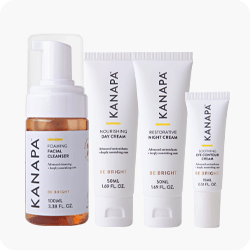Did Someone Say Media Hype?
You're probably familiar with Benjamin Franklin's infamous quote "nothing can be said to be certain, except death and taxes".
But in this age of artificial intelligence, gene editing and our ever-increasing knowledge of the causes of aging, is it time to rethink the certainty of death?
If we based our knowledge on sensationalist headlines, one could easily be led to believe that scientists have found the fountain of youth - the ultimate infinity pill - in the form of supplements to boost sirtuins.
A quick Google search of recent news related to sirtuins returned a huge number of headlines. Here is a small snippet of the headlines related to sirtuins from the last couple of weeks. "Scientists Identify Pathway That Extends Lifespan" and "Can Scientists Cure Death? It Sure Looks Like It" and "U.S. Special Operations Command to Test Anti-Aging Pill".
It's fair to say, sirtuins have hit the big time in terms of news. Given the intense interest in sirtuins, you're probably wondering whether you should be thinking about the state of your own sirtuins!
In this blog, we give you the run-down the science behind sirtuins, minus the hype.
What Are Sirtuins?
Sirtuins are a family of seven enzymes that have been designated SIRT 1 - 7. Technically speaking, sirtuins are NAD+-dependent deacetylases. They break a molecule called NAD+ into two parts and in doing so they also remove an acetyl chemical group from certain proteins. By doing this, sirtuins mediate a wide array of cellular processes. As you can see, sirtuins use NAD+ to carry out their functions.
To learn more about NAD+, head to Xtendlife's blog What is NAD+ and Why Do We Need It.
Because sirtuins rely on NAD+ to carry out their functions, they act like sensors to a cell's oxidative state. Thus, sirtuins are major effectors in the cellular response to metabolic, oxidative and genotoxic stress, acting to modulate cellular physiology under these conditions.
Sirtuins do things like fix broken DNA, ensure the structural integrity of chromosomes, control how cells reproduce themselves and whether they become senescent. Sirtuins even regulate the number of energy-producing 'batteries' (mitochondria) in our cells and how efficiently those mitochondria function.
What’s the Deal With Sirtuins and Aging?
Many studies have shown that sirtuins promote longevity in yeast, worms, flies and mice. In animal studies, sirtuins can also lessen many diseases of aging, such as type 2 diabetes, cancer, cardiovascular disease, neurodegenerative diseases, and pro-inflammatory diseases.
Sirtuins are also responsible for the beneficial effects of calorie restriction (fasting) and exercise in humans.
However, the activity of sirtuins declines with age. Researchers have proposed various mechanisms to explain why we lose our precious sirtuin activity as we advance in years. They have concluded that "systemic decline in NAD+ has emerged as the most likely explanation for why there is an age-related decline in sirtuins" (Imai, Guarente, 2014).
When it comes to aging, sirtuins are needed to slow down many of the hallmarks of aging. As well as being associated with longevity, it's not surprising that sirtuins are implicated in protection against many chronic conditions associated with aging, including cardiovascular diseases and neurodegenerative diseases.
Sirtuins and DNA Repair
One common hallmark in aging is the accumulation of genetic damage throughout life due to 'stressors' such as oxidative stress. Evidence has shown that deficiencies in DNA repair mechanisms such as sirtuins, cause accelerated aging in mice and humans. Huge amounts of research show that one of the main jobs of sirtuins is to repair DNA.
The majority of neurodegenerative diseases are associated with an increase in DNA damage. It appears that in mice at least, the development of Alzheimer's disease is slowed by activating sirtuins. This can be seen in research where mice were genetically engineered for Alzheimer's disease but were partially protected by taking nicotinamide riboside chloride (NR). NR converts to NAD+ in the body and is available for use by sirtuins.
Sirtuins and Mitochondria
Another hallmark of aging is mitochondrial dysfunction and you guessed, it, sirtuins are crucial to stopping this decline!
Sirtuins are responsible for regulating the number of mitochondria and also activating mitochondrial antioxidant defence pathways.
An interesting fact, when we exercise, the number of mitochondria in our cells goes up - and we (eventually) feel more energetic. Sirtuins are responsible for that beneficial effect!
Interestingly, sirtuins are involved in clearing away damaged mitochondria, an important process to ensure that only top-performing mitochondria remain. Sirtuins are also involved in mitochondrial gene expression - needed for normal mitochondrial function. In short, we need a healthy level of sirtuin activation to keep our mitochondria in top shape doing the job they are supposed to do - create energy!
Cellular Senescence
Cellular senescence is when cells stop renewing themselves (i.e., they stop dividing). As we age, we get an accumulation of senescent cells, and this is considered to be another hallmark of aging.
Although not fully understood, growing evidence has shown that sirtuins are an essential factor in delaying cellular senescence. Suppression of cellular senescence by sirtuins is mediated through multiple mechanisms relating to the integrity of chromosomes and DNA. For example, sirtuins help with structural integrity of chromosomes by helping organize chromatin - this is like the scaffold that holds our chromosomes together.
Another way in which sirtuins delay cellular senescence is by slowing age-related telomere shortening. Telomeres are protective caps on our DNA that reduce as we get older. Last but definitely not least, sirtuins help delay senescence through their essential role in DNA repair.
The Bottom Line
There are still many unanswered questions with regards to sirtuins. Can we really activate sirtuins with a supplement? Will it make us live longer, or be healthier and if so, by how much?
Based on the pace of clinical research looking at sirtuin activators such as nicotinamide riboside chloride, it seems likely that we'll have the answer in the next 10 or so years. 10 years you say!
It is unpalatable to many people to wait 10 years to fully understand the impact of sirtuins on lifespan and healthy aging.
While there may not be a definitive answer right now, we do know that sirtuins are a crucial part of healthy aging and even potentially lifespan. We also know that our level of NAD+ declines with age, and that in turn, reduces the activation of sirtuins.
We also know that we can get more NAD+ by taking nicotinamide riboside chloride (NR) as a supplement NR6 and that provides more NAD+ to activate sirtuins.
So, while it's probably premature to overturn Benjamin Franklin's quote about the certainty of death and taxes, it is definitely worth giving your sirtuins a boost with NAD+ boosters such as Xtendlife's NR6.
NR6 - Natural NAD+ Booster
A synergistic combination of natural ingredients to support cellular energy and optimal NAD+ level.
Shop now
References
- Bosch-Presegue L and Vaquero A. Sirtuin-dependent epigenetic regulation in the maintenance of genome integrity. FEBS Journal 282 (2015) 1745–1767.
- Imai, S-I. and Guarente, L. NAD+ and Sirtuins in Aging and Disease. Trends Cell Biol. 2014 August; 24(8): 464–471.
- Lee, S-H et al. Sirtuin signaling in cellular senescence and aging. BMB Rep. 2019; 52(1): 24-34.
- Meng, F. et al. Synergy between SIRT1 and SIRT6 helps recognize DNA breaks and potentiates the DNA damage response and repair in humans and mice. eLife 2020;9:e55828
- Vazquez, B.N. et al. Sirtuins and DNA damage repair: SIRT7 comes to play. Nucleus 2017, Vol. 8, No. 2, 107–115.


 Supplements
Supplements Superfoods
Superfoods Bundles
Bundles

















